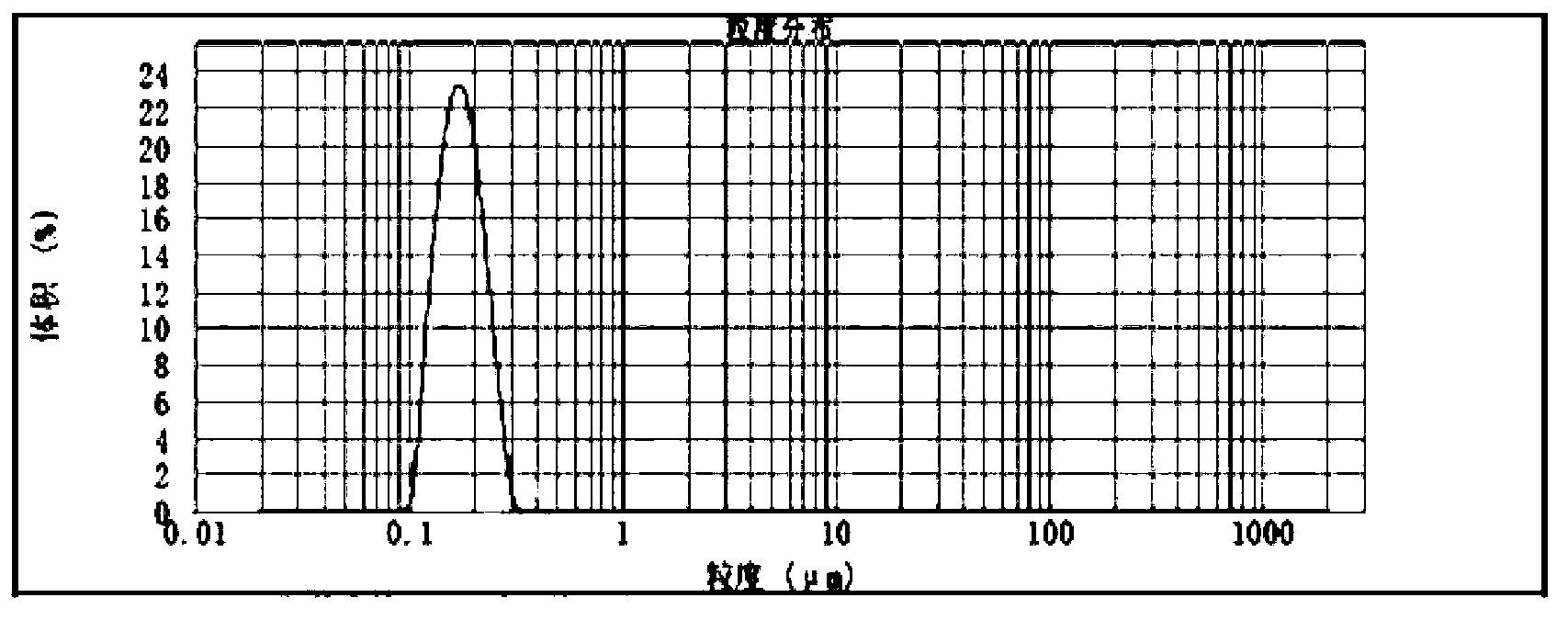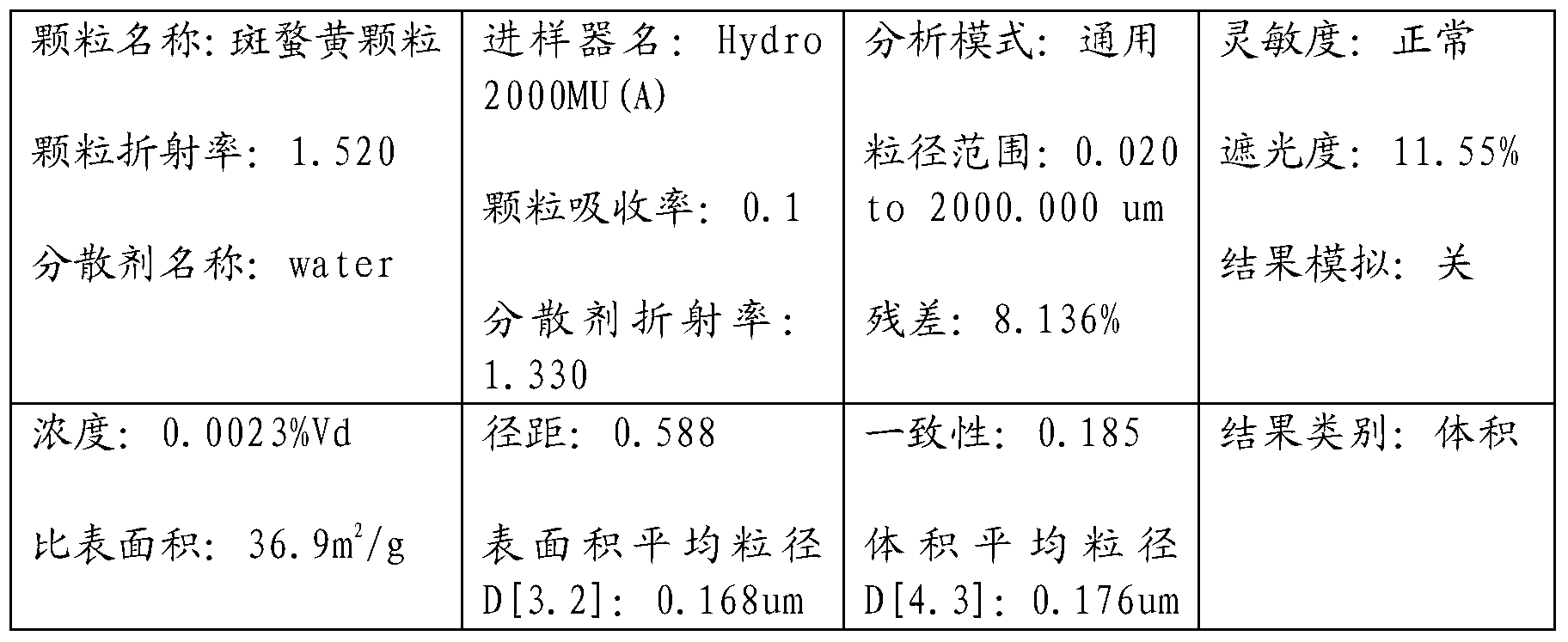Good microencapsulation method for carotenoid
A carotenoid, a good technology, applied in the field of preparation of carotenoid granules or powder, can solve the problems of easy decomposition or isomerization, low carotenoid embedding rate, affecting the effective absorption of animals, etc., and achieves improved embedding rate, significant coloration, increased water dispersibility
- Summary
- Abstract
- Description
- Claims
- Application Information
AI Technical Summary
Problems solved by technology
Method used
Image
Examples
specific Embodiment 1
[0037] A good microencapsulation method of carotenoids is carried out in the following steps:
[0038] 1. Completely dissolve 33g gelatin, 43.3g sucrose, 1.5g Vc palmitate, 0.2g EDTA, 0.5g tea saponin into 100.0g water to form a uniform water phase A, adjust the pH to 10.0-10.5 with 20% NaOH solution.
[0039] 2. Dissolve 18.0 g of canthaxanthin crystals, 3.0 g of ethoxyquin, and 0.5 g of VE oil in 360.0 g of dichloromethane, stir until completely dissolved, and obtain oil phase B.
[0040] 3. Under high stirring and high shear conditions, add oil phase B to water phase A, then emulsify at a stirring speed of 2900-18000rpm for 15 minutes, then raise the temperature to 50°C to remove the solvent and form a microemulsion. Wherein, the obtained microemulsion is a sub-nanometer microemulsion, its average particle size is 130-200nm, and the pH of the microemulsion is 9-10; high stirring and high shearing means: the shearing power is: 0.5-100Kw, The stirring speed is 2900-18000 rpm...
specific Embodiment 2
[0046] 1. Dissolve 33g of gelatin, 51.g of sucrose, 1.5g of Vc palmitate, 0.2g of EDTA, and 0.5g of tea saponin into 100.0g of water to form a uniform water phase. Adjust the pH to 10.0-10.5 with 20% NaOH solution.
[0047] 2. Dissolve 10.5g of β-carotene crystals, 1.0g of BHT, and 2.0g of VE oil in 210.0g of chloroform, and stir until completely dissolved.
[0048] 3. Under high stirring and high shear conditions, add oil phase B to water phase A, then emulsify at a stirring speed of 2900-18000rpm for 15 minutes, then raise the temperature to 50°C to remove the solvent and form a microemulsion. Wherein, the obtained microemulsion is a sub-nanometer microemulsion, its average particle size is 130-200nm, and the pH of the microemulsion is 9-10; high stirring and high shearing means: the shearing power is: 0.5-100Kw, The stirring speed is 2900-18000 rpm.
[0049] 4. Spray-dry the microemulsion to make β-carotene particles.
[0050] Refer to Table 2 and figure 2 , in the β-ca...
PUM
 Login to View More
Login to View More Abstract
Description
Claims
Application Information
 Login to View More
Login to View More - R&D
- Intellectual Property
- Life Sciences
- Materials
- Tech Scout
- Unparalleled Data Quality
- Higher Quality Content
- 60% Fewer Hallucinations
Browse by: Latest US Patents, China's latest patents, Technical Efficacy Thesaurus, Application Domain, Technology Topic, Popular Technical Reports.
© 2025 PatSnap. All rights reserved.Legal|Privacy policy|Modern Slavery Act Transparency Statement|Sitemap|About US| Contact US: help@patsnap.com



